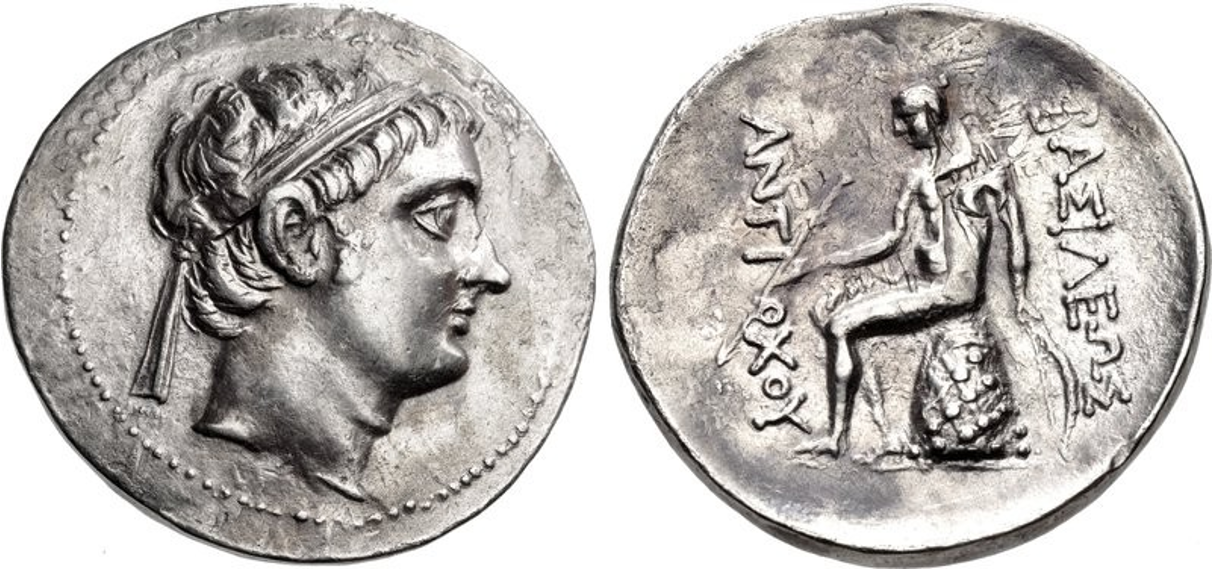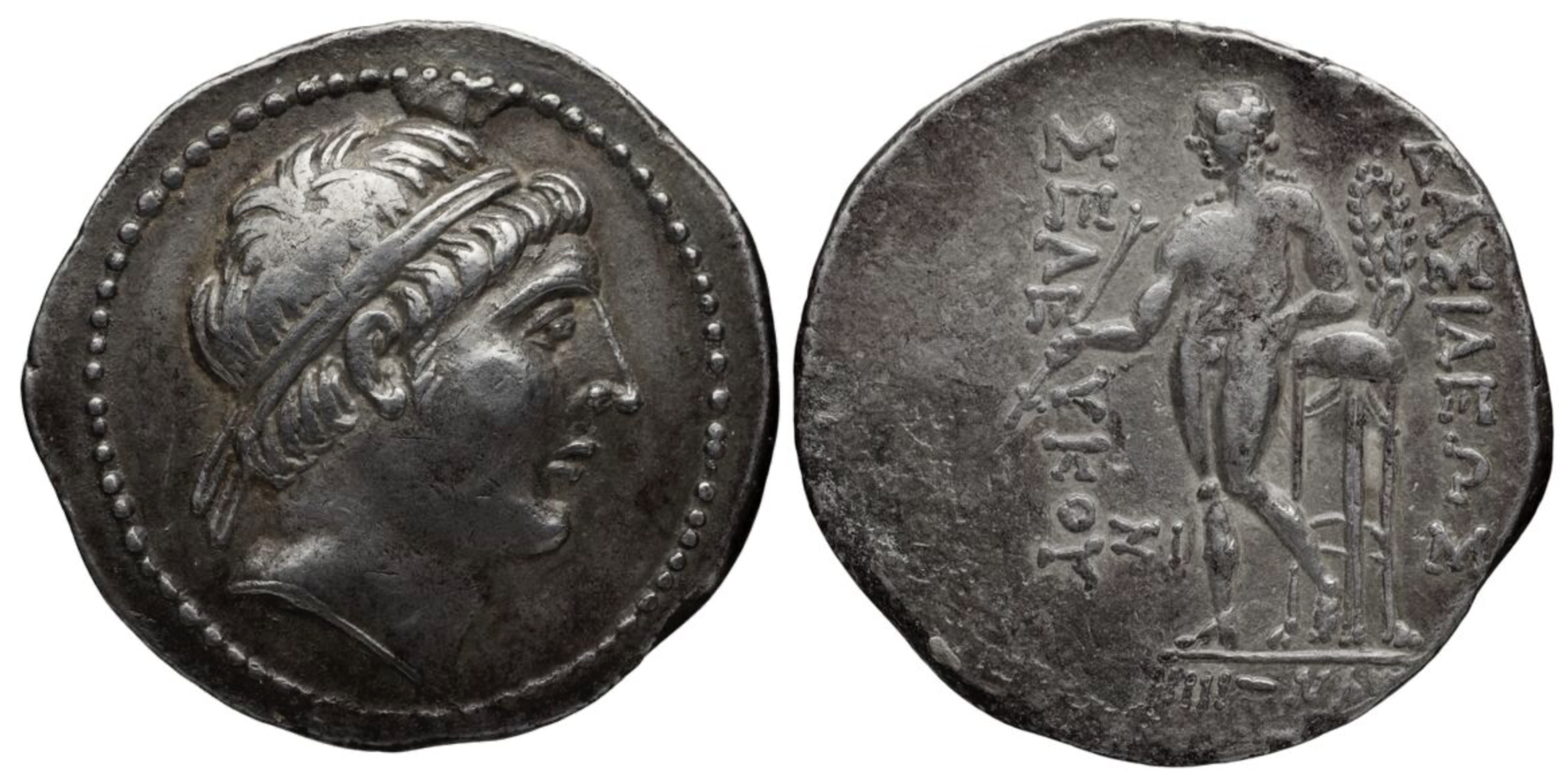242 BCE - 227 BCE | BAΣIΛEΩΣ ANTI-OXOY
Overstriking coin
2395 - Uncertain mint in Asia Minor (Antiochus Hierax?).png
[1]
|
|
Sale(s)Sale(s) ᵖ:
|
Classical Numismatic Group, 97, 17 Sept. 2014, 287.
|
|
|
|
Description
| ObverseInscription or printing placed on the obverse.:
|
Male head right with youthful features, wearing diadem with ends falling straight and parallel
|
ReverseInscription or printing placed on the reverse.:
|
BAΣIΛEΩΣ ANTI-OXOY (Greek) Apollo Delphios seated left on omphalos, holding arrow and bow, no control marks. Unpublished. Good VF, lightly toned, light marks and scratches
|
Mint and issuing power
Chronology
| FromIdentifies the initial date in a range assigned in a numismatic context. 242 BCE toIdentifies the final date in a range assigned in a numismatic context.. 227 BCE
|
Hellenistic 323-30 BC  periodTime period of the numismatic object. periodTime period of the numismatic object.
|
Physical description
MetalThe physical material (usually metal) from which an object is made.: Silver 
|
WeightWeight of the numismatic object (in grams). in grams: 15.4715.47 g <br />15,470 mg <br />
|
DenominationTerm indicating the value of a numismatic object. Examples: tetradrachm, chalkous, denarius.: tetradrachm 
|
AxisDescribes the directional relationship between the obverse and reverse of a numismatic object.: 11 mm <br />0.1 cm <br />
|
| DiameterDescribes diameter of an object (in mm).: 3131 mm <br />3.1 cm <br />
|
StandardStandard.: Attic
|
References
Description
| ObverseInscription or printing placed on the obverse.:
|
Diademed head of Seleucus III right
|
ReverseInscription or printing placed on the reverse.:
|
BAΣIΛ[ΕΩΣ] ΣE[ΛΕYΚΟΥ] (Greek) Apollo standing left, leaning elbow on tripod (visible: Apollo’s head and the top of the tripod)
|
Mint and issuing power
Chronology
| FromIdentifies the initial date in a range assigned in a numismatic context. 246 BCE toIdentifies the final date in a range assigned in a numismatic context.. 225 BCE
|
Hellenistic 323-30 BC  periodTime period of the numismatic object. periodTime period of the numismatic object.
|
Physical description
| DenominationTerm indicating the value of a numismatic object. Examples: tetradrachm, chalkous, denarius. ᵖ:
|
tetradrachm 
|
StandardStandard. ᵖ:
|
Attic
|
References
| Frequency of overstrikesFrequency of overstrikes:
|
exceptional
|
Level of confidenceLevel of confidence of the identification:
|
strong
|
| RemarksRemarks:
|
"The undertype is most almost certainly a coin of Seleukos II [see SC II p. 666, C931], and although SC 936 might belong to the time of Seleukos III, the traces of the right-side monogram on the undertype are not consistent with the monograms of that issue). The identification of the issuer as Antiochos Hierax is not certain, but seems most likely, as the coin portraiture of Antiochos III is well developed, and the portrait on the present coin does not fit in this scheme. If the coin is of Hierax, it may suggest that he had a program to recoin his rival Seleukos II’s coinage by overstriking it".
|
References
- ^ Houghton, Arthur - Lorber, Catharine C. - Hoover, Oliver D. (2008), Seleucid coins : a comprehensive catalogue. Part 2, Seleucus IV through Antiochus XIII, 2 v., New York - Lancaster - London, (xxx), 120 p. of plates : ill., maps, tables

